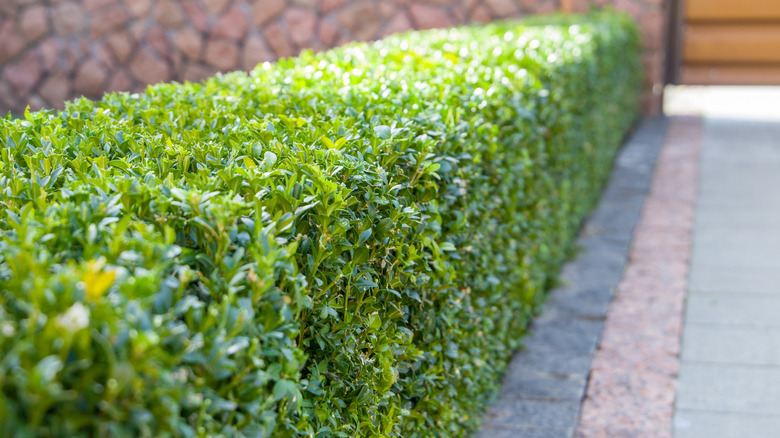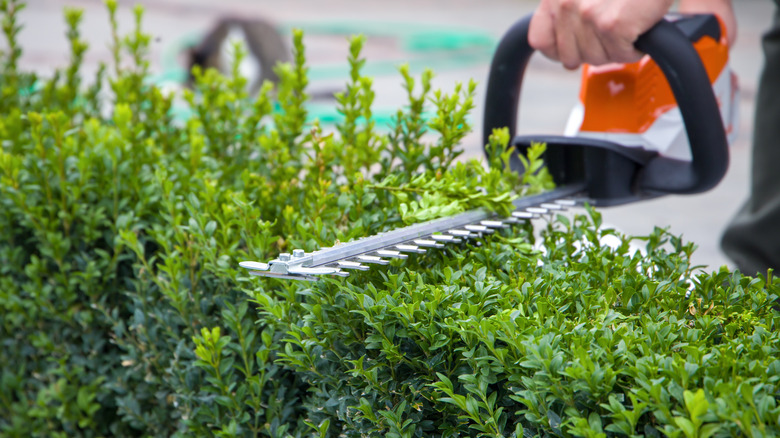Why Boxwood Shrubs Make An Excellent Fence Alternative For Your Yard
Is there anything more classic than a boxwood (Buxus sempervirens) hedge? They make appearances in elegant gardens in nearly every part of the world, but they are practical too. These evergreens are dense, can be trimmed to any size or shape you desire, and are typically low-maintenance plants that will easily form a living fence to define your yard without any harsh lines. So, if you're looking for an alternative to a traditional fence, consider the boxwood.
There are many ways to use boxwood for backyard privacy, but a fence is the simplest. With the right conditions, these shrubs can grow much taller than the average fence, reaching heights of 15 to 20 feet tall. If you want to sufficiently block the view of onlookers, a boxwood may be your best bet. While it varies by variety, boxwoods typically grow 6 inches or less in a year. Look for the faster growing varieties if you're eager to form a hedge quickly. Obviously, you can buy plants in a variety of sizes to suit your needs. A 'Sprinter' boxwood, which is on the faster growing side, is about $21 for a quart-sized plant. Bigger plants will cost more but will provide privacy more quickly, so you will need to balance your budget with your needs, especially if you have a long fence line. A simple picket fence may be less expensive in the short-term, but factoring in maintenance and replacement panels may change that calculation.
Growing a boxwood fence
Boxwood comes in a wide variety of options, so you are sure to find an option that will work in your local climate, but they do have some typical needs you will want to consider. They will adapt to many conditions, though typically prefer partial shade to full sun. Additionally, they like well-drained soil. Consult your individual variety for suggestions about spacing, and plant them in a hole about twice the size of the root ball. Boxwoods are shallow rooted, so water them regularly while they are being established, and then mulch them to help hold moisture in the ground. If you get snowy winters, consider removing any heavy snow to prevent breakage.
When it comes to caring for a boxwood hedge, the biggest chore is trimming it. How much you need to do depends on how short you plan to keep it, and how tidy a shape you want to achieve. However, you should always trim boxwood in the spring. You will see new growth within a month or so, but if you trim in the late summer or fall, you may stress the plant and reduce its hardiness. It's best to get this job done early in the spring as you may find that birds will build nests in these bushes — and you wouldn't want to disturb them. The malleability of boxwoods also makes them great plants for getting the look of trendy knot gardens.

